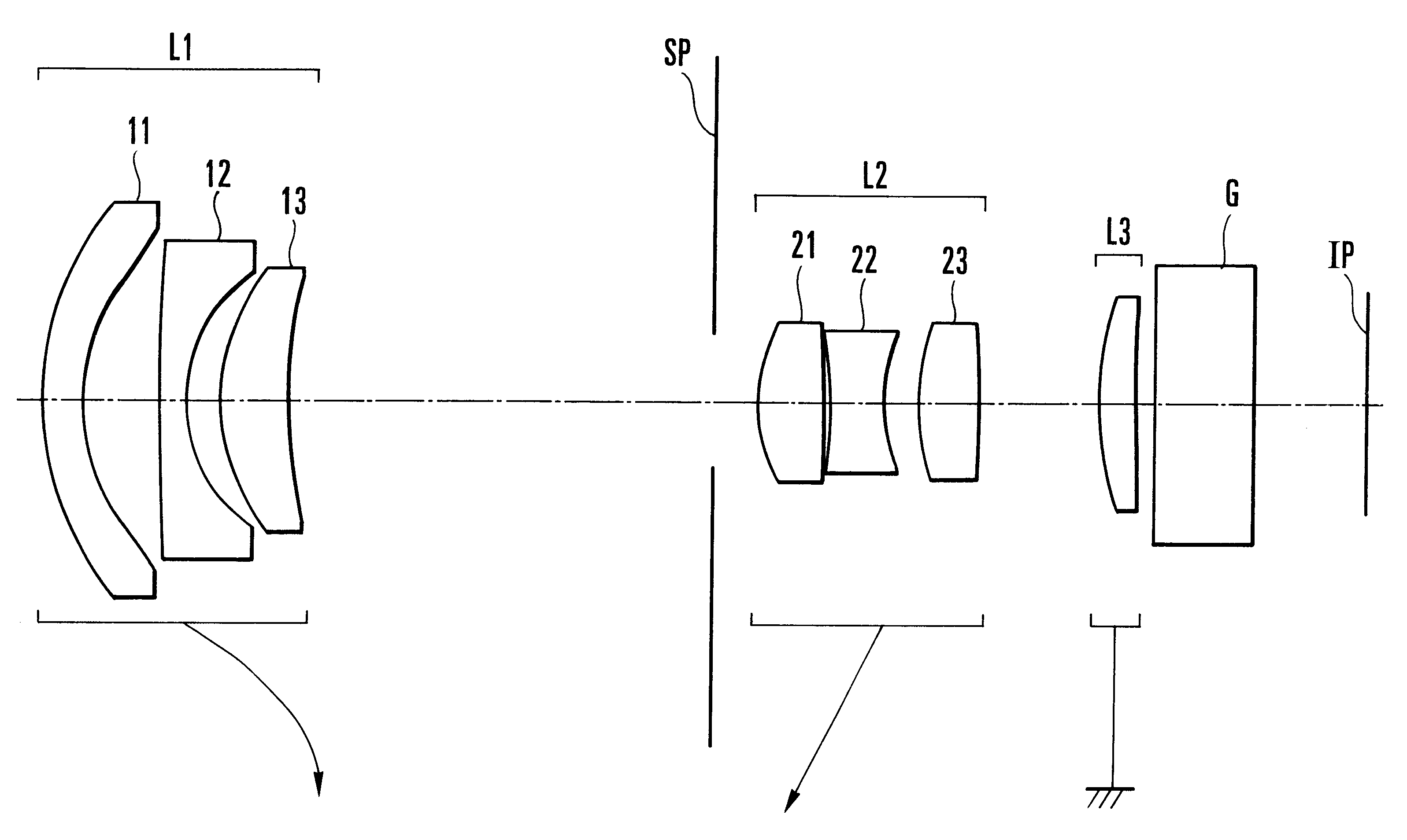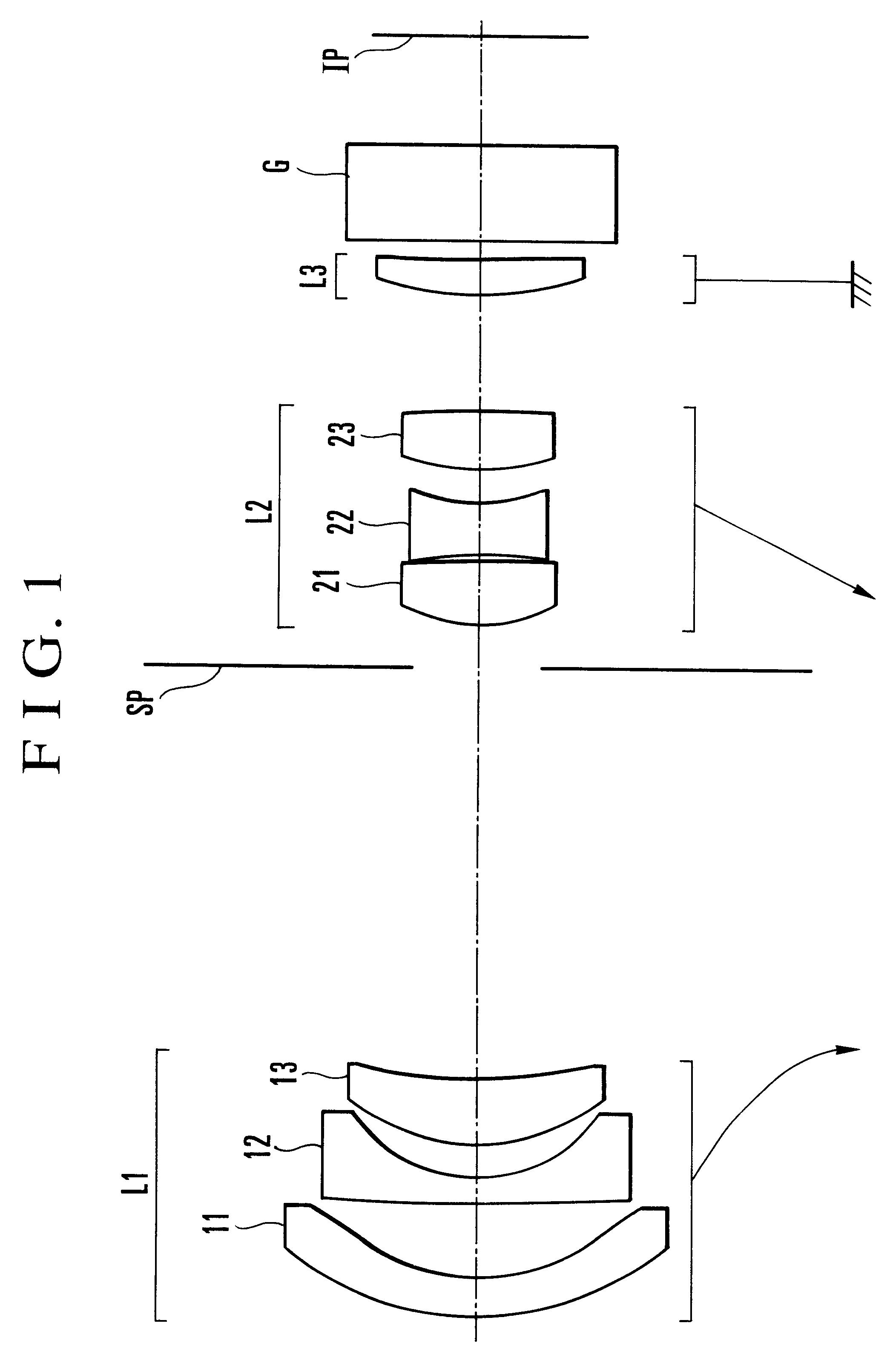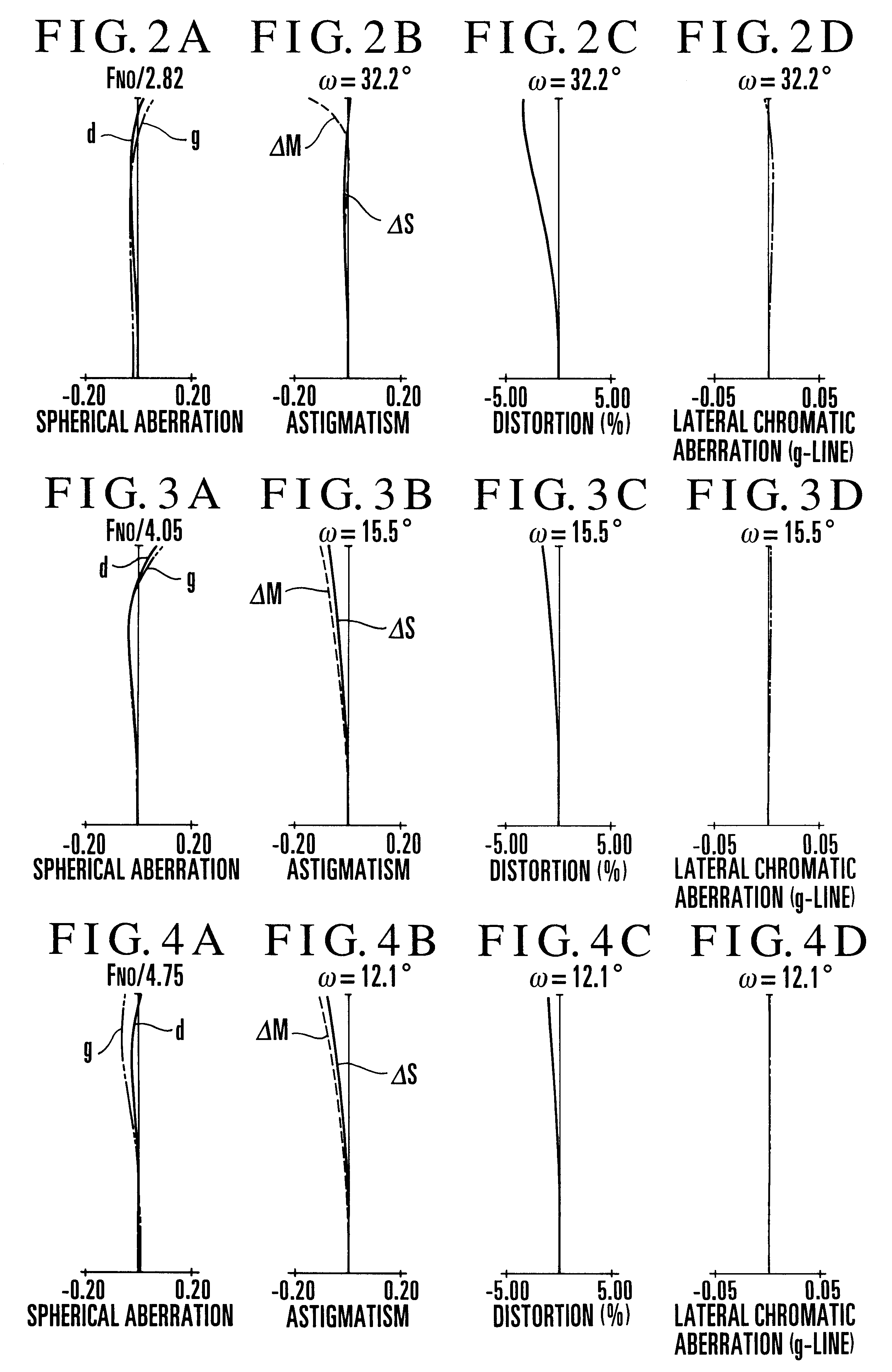Zoom lens and photographing apparatus having the same
a zoom lens and photographing apparatus technology, applied in the field of compact zoom lenses, can solve the problems of hardly correcting chromatic aberrations, increasing and contradicting the goal of minimizing the size of the lens system
Inactive Publication Date: 2001-10-23
CANON KK
View PDF29 Cites 164 Cited by
- Summary
- Abstract
- Description
- Claims
- Application Information
AI Technical Summary
Problems solved by technology
This method, however, increases the lens-system size, contradicting the goal of minimizing the size of the lens system.
The above-described method that relies on the asphericity can, however, hardly correct chromatic aberrations.
Therefore, the difficulty of correcting off-axial aberrations tends to increase at the wide-angle end of the zooming range.
So, the aberrations the first lens unit produces, including chromatic aberrations, are not sufficiently corrected.
Another problem arises from the fact that the aspherical first lens in the first embodiment is formed to a shape unfavorable for making it by molding.
Concretely speaking, the axial and edge thicknesses differ so greatly from each other that the lens, although easy to make, is very hard to handle in detaching it from the mold.
Also, in the second embodiment, although the drawbacks described above are slight, the field angle is narrow, as the wide-angle end is not designed to extend toward short enough focal lengths.
However, the first lens unit is constructed with one or two members and is not sufficiently corrected for aberrations, including chromatic ones.
In addition, the zoom lens is designed not to make the maximum field angle wide enough.
The aberrations the first lens unit produces are not sufficiently corrected.
So, the aberrations the first lens unit produces are not sufficiently corrected.
So, the first lens unit produces distortion and, during zooming to the wide-angle region, lateral aberration.
These aberrations are not sufficiently corrected.
So the spherical aberration and astigmatism the second lens unit produces are not sufficiently corrected.
Otherwise, the range of variation of aberrations with zooming would increase greatly, and it would become difficult to obtain images of good quality over the entire area of the image frame.
However, since these 3-unit zoom lenses are designed to be used mainly for 35 mm film photography, it is hard to say that the back focal distance matches the required one for an optical system using a solid-state image pickup element and coincides with good telecentric characteristics as to suffice for that optical system.
In these conventional examples, however, each of the lens units has a relatively large number of constituent lenses, thereby undesirably elongating the total length of the entire lens system and increasing the production cost.
Particularly when widening the field angle, it is, therefore, unavoidable to suffer the drawback of increasing the diameter of the complete lens.
To control the focusing movement together with the zooming movement, there is another drawback that the operating mechanism becomes complicated in structure.
However, the total length for the wide-angle end of the entire lens system is relatively long.
As constituent lenses of the first lens unit increase in diameter to admit those rays, there is a drawback that the whole lens system becomes bulky.
Further, in a case where the field angle for the wide-angle end is widened, a peculiar problem arises in that distortion is under-corrected.
Method used
the structure of the environmentally friendly knitted fabric provided by the present invention; figure 2 Flow chart of the yarn wrapping machine for environmentally friendly knitted fabrics and storage devices; image 3 Is the parameter map of the yarn covering machine
View moreImage
Smart Image Click on the blue labels to locate them in the text.
Smart ImageViewing Examples
Examples
Experimental program
Comparison scheme
Effect test
the structure of the environmentally friendly knitted fabric provided by the present invention; figure 2 Flow chart of the yarn wrapping machine for environmentally friendly knitted fabrics and storage devices; image 3 Is the parameter map of the yarn covering machine
Login to View More PUM
 Login to View More
Login to View More Abstract
A zoom lens, includes, in order from an object side to an image side, a first lens unit of negative refractive power, the first lens unit having an aspherical lens of negative refractive power, a stop, a second lens unit of positive refractive power, the second lens unit having an aspherical lens of positive refractive power, and a third lens unit of positive refractive power, wherein, during zooming from a wide-angle end to a telephoto end, the second lens unit and the stop move in unison toward the object side, and the first lens unit so moves as to compensate for a shift of an image plane resulting from the zooming.
Description
1. Field of the InventionThe present invention relates to compact zoom lenses for use in photographic cameras, video cameras, electronic still cameras, etc.2. Description of Related ArtRecently, as the home video camera has been reduced in size and weight, minimization of the bulk and size of the zoom lens, too, has made a remarkable advance, and great efforts are being devoted, in particular, to greatly reduce the total length of the zoom lens, to further reduce the diameter of the front lens members, and to seek a simpler configuration.To attain these aims, optical system means has been developed to limit the range or zoom ratio to 2 to 3, and to provide a simple arrangement for the zoom lens of 2-unit or 3-unit configuration.For example, Japanese Laid-Open Patent Applications No. Sho 55-35323 and No. Sho 56-158316 disclose a 3-unit zoom lens comprising, in order from an object side to an image side, a first lens unit of negative refractive power, a second lens unit of positive re...
Claims
the structure of the environmentally friendly knitted fabric provided by the present invention; figure 2 Flow chart of the yarn wrapping machine for environmentally friendly knitted fabrics and storage devices; image 3 Is the parameter map of the yarn covering machine
Login to View More Application Information
Patent Timeline
 Login to View More
Login to View More Patent Type & Authority Patents(United States)
IPC IPC(8): G02B15/177
CPCG02B15/177G02B15/143507
Inventor WACHI, FUMIHITOKIMURA, KENICHI
Owner CANON KK
Features
- R&D
- Intellectual Property
- Life Sciences
- Materials
- Tech Scout
Why Patsnap Eureka
- Unparalleled Data Quality
- Higher Quality Content
- 60% Fewer Hallucinations
Social media
Patsnap Eureka Blog
Learn More Browse by: Latest US Patents, China's latest patents, Technical Efficacy Thesaurus, Application Domain, Technology Topic, Popular Technical Reports.
© 2025 PatSnap. All rights reserved.Legal|Privacy policy|Modern Slavery Act Transparency Statement|Sitemap|About US| Contact US: help@patsnap.com



